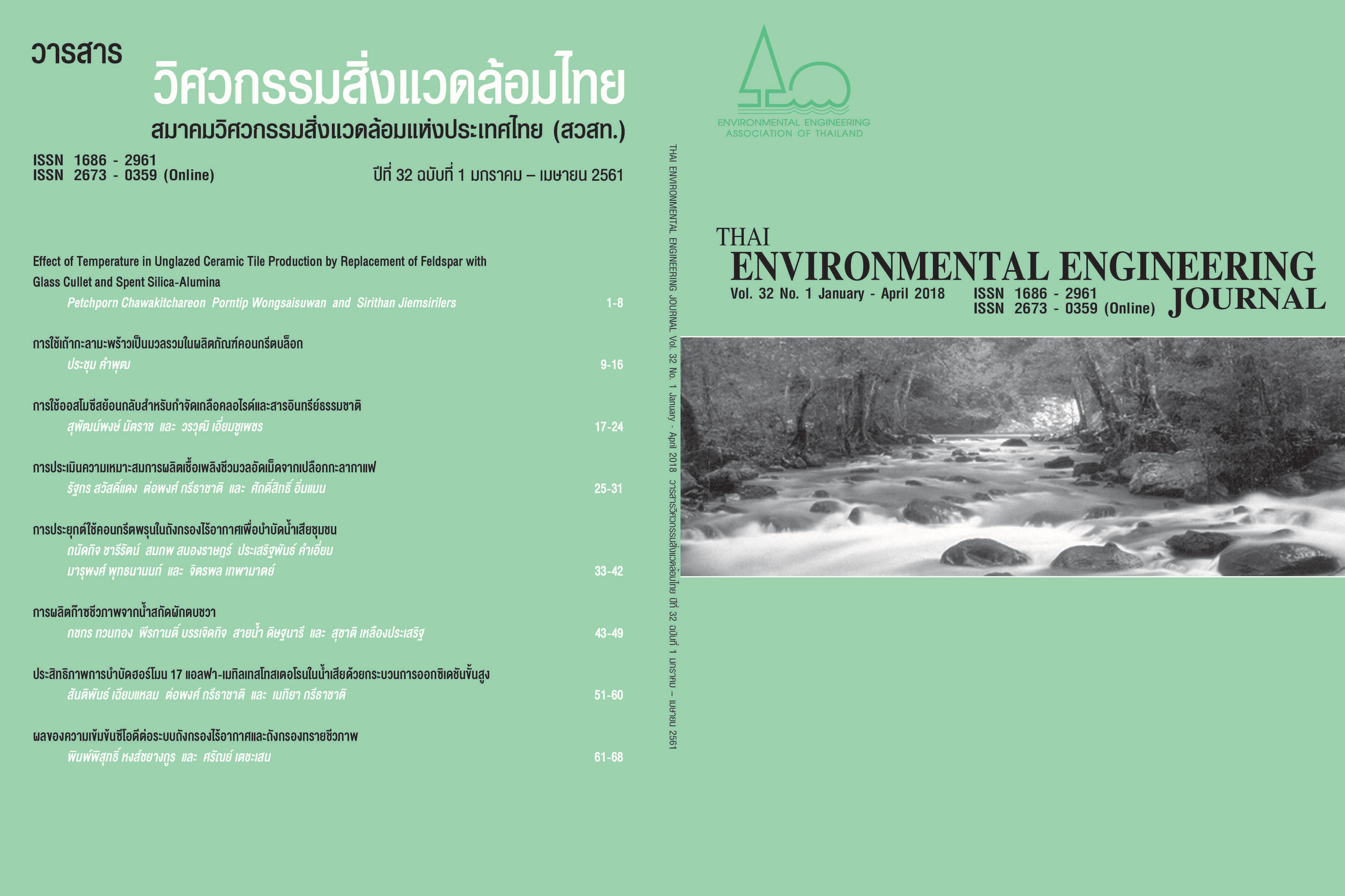The Application of Porous Concrete in Anaerobic Filter for Community Wastewater Treatment
Main Article Content
Abstract
In this study, the application of porous concrete in anaerobic filter for community wastewater treatment was investigated. This study was divided into four parts. 1) The synthesis of porous concrete: It was found that porous concrete provided quite rough surface, dark gray in color with cylindrical shape. The average diameter of 9.7±0.24 cm, average height of 7.63±0.39 cm, average cross sectional area of 73.96±3.74 cm2 with average weight of 965±59.72 g, were obtained. The average coefficient of water permeability of 2.66±0.25 cm/s and average void ratio of 34.75±4.85% could be measured. 2) Sampling of wastewater from University canteen was taken behind the Student Union of Engineering Faculty; Ubon Ratchathani University was collected and found a pH value of 7.4±0.00, TSS of 12.5±0.70 mg/l and COD of 704±0.00 mg/l, respectively. 3) Increment of micro-organisms growth on a media was found after 10 days submersion of porous concrete in wastewater. The slippery mucilage surface on porous concrete was observed and the COD in the anaerobic filter using porous concrete of 1 block and 3 blocks decreased from 704±0.00 mg/l to 352±0.00 mg/l and 344±11.31 mg/l, respectively. The average weight of porous concrete in the air was increased of 22.50 grams. 4) The efficiency testing of wastewater treatment by porous concrete in the anaerobic filter provided the significant results as the followings: pH has become higher in a series of porous concrete as a media. In particular, the use of 3 porous concrete blocks provided pH in the range of 7.5-8.7. The performance in the treatment of COD and TSS was found that increasing in porous concrete block as a media and retention time, provided better effectiveness in anaerobic filter treatment. The anaerobic filter media of 3 porous concrete blocks with retention time of 10 days in wastewater treatment showed the highest effectiveness in treatment of TSS and COD of 39.29% and 51.92%, respectively. In conclusion, porous concrete can be used as a media in anaerobic filter treatment. The physical characteristics of porous concrete with void inside gave a space for the living of micro-organisms.
Article Details
References
[2] Pollution Control Department of Thailand. Handbook: Designers and Manufacturers of In-situ Wastewater Treatment Systems, Book 2, 1994. (in Thai)
[3] Thanudkij Chareerat, Prinya Chindaprasirt and Shigemitsu Hatanaka. Porous concrete: Environmentally Friendly Concrete. The 13th National Convention on Civil Engineering. The Engineering Institute of Thailand under the Royal Patronage, 14-16 May 2008, Jomtien Palm Beach Hotel Pattaya, Chonburi Province, P. 296. (in Thai)
[4] Department of Industrial Works, Textbook of Water Pollution Treatment Systems: Environmental Engineering Association of Thailand, Bangkok, 2002. (in Thai)


